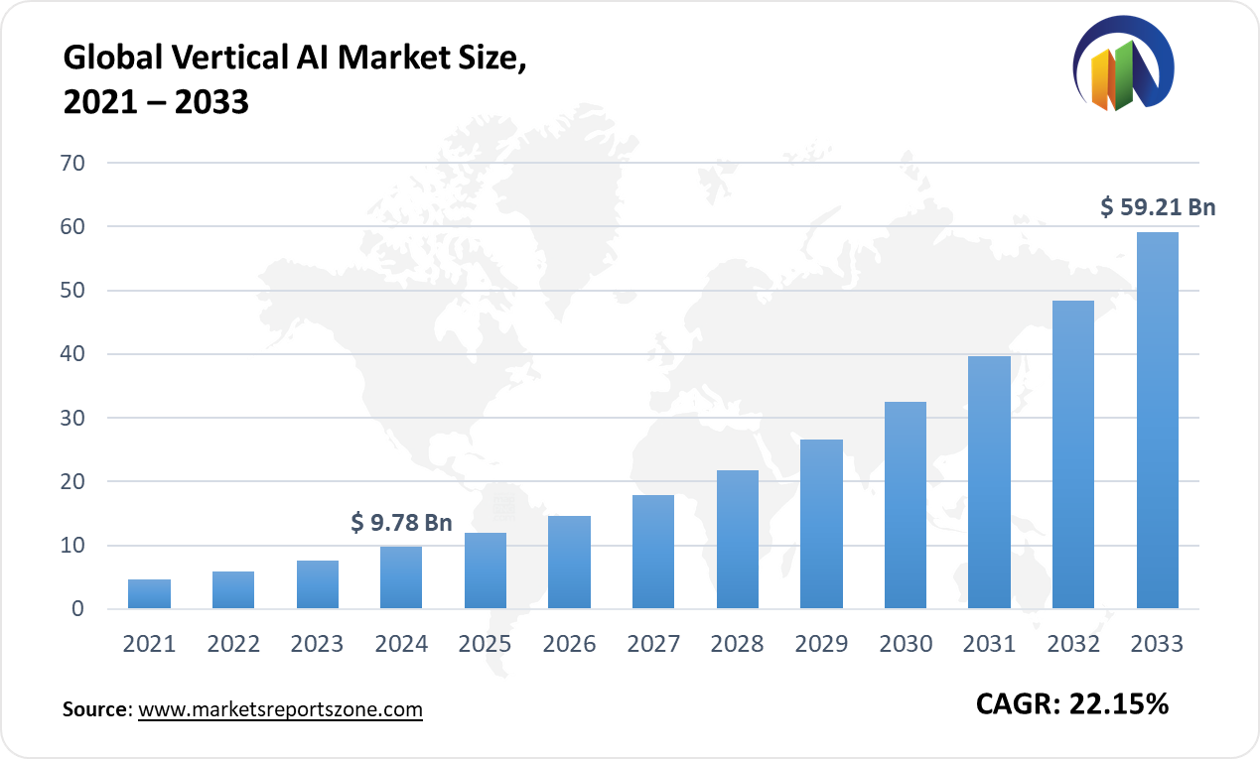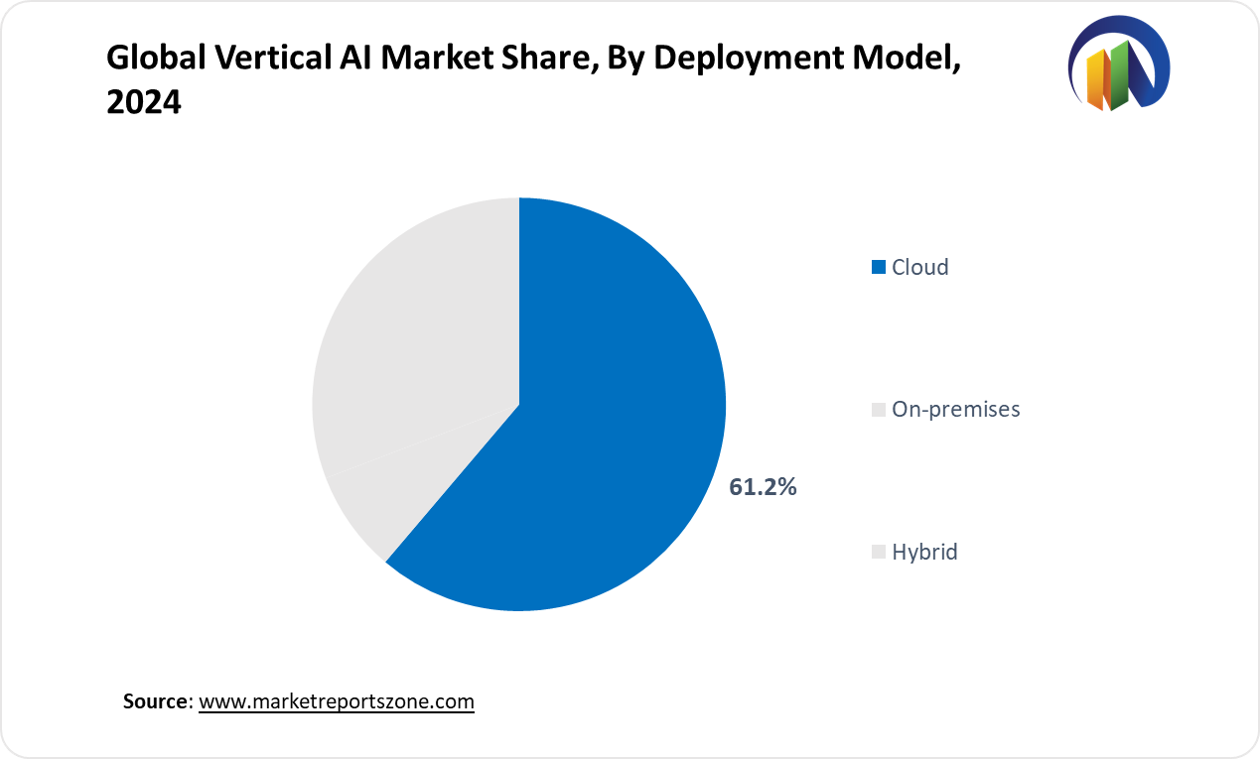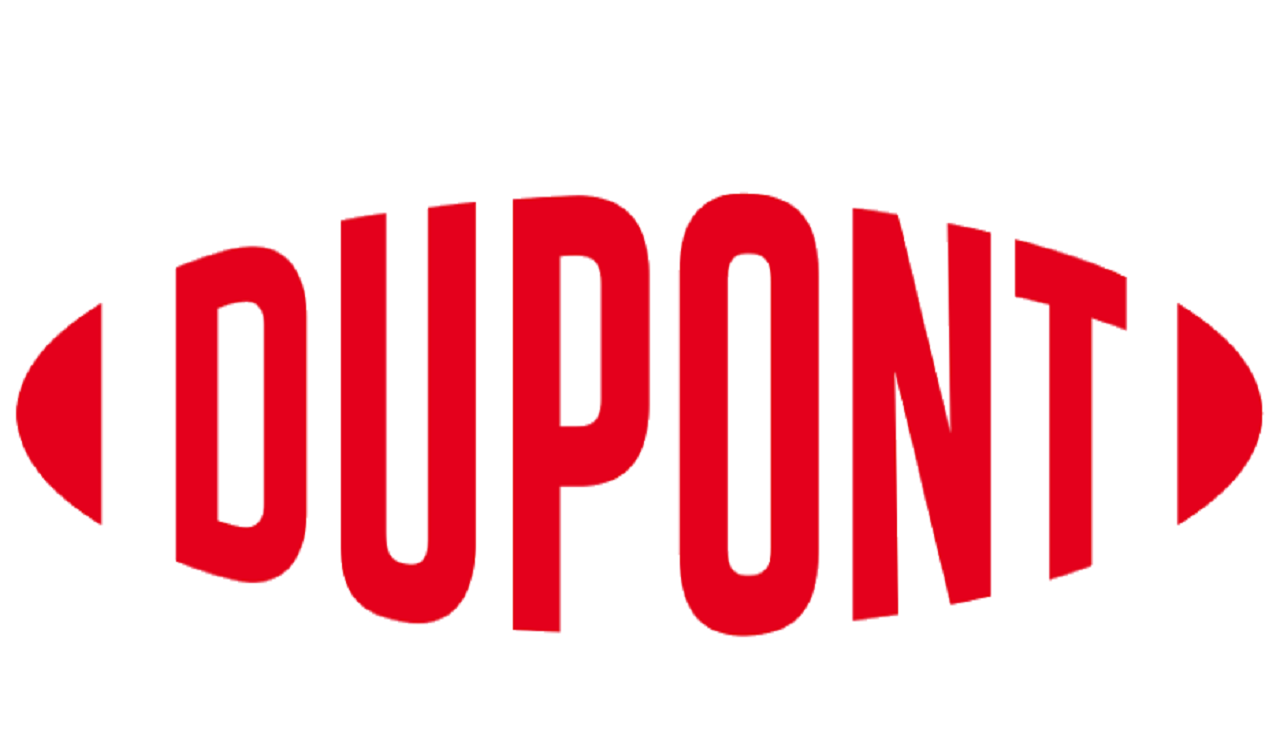The Global Vertical AI Market Size is expected to reach USD 59.21 Billion by 2033 from USD 9.78 Billion in 2024, with a CAGR of around 22.15% between 2024 and 2033. The global vertical AI market is driven by automation demand and industry-specific AI applications. Automation is being adopted in manufacturing, healthcare, and finance to improve efficiency. AI-driven quality control is being used in factories, while AI-powered diagnostics are enhancing patient care. Another driver is the increasing use of AI in personalized customer experiences. AI chatbots and recommendation engines are improving user engagement in e-commerce and banking. However, data privacy concerns are restraining market growth. Sensitive customer information is being handled by AI systems, raising security risks. Strict regulations are being imposed to protect user data. Despite this, opportunities are emerging in AI-driven cybersecurity and AI in drug discovery.
AI is being used to detect cyber threats in real time, reducing financial losses. In healthcare, AI is expediting drug research, leading to faster vaccine and medicine development. AI-based protein folding analysis has already accelerated COVID-19 vaccine creation. Retail is also benefiting from AI-driven demand forecasting, improving supply chain efficiency. The AI market is witnessing expansion across sectors, creating new business opportunities. AI applications are continuously evolving, reshaping industries worldwide. Investment in AI innovation is expected to grow, fostering further advancements and adoption. The market’s potential remains vast despite existing challenges.

Driver: AI Automation
AI-driven automation is transforming industries by enhancing efficiency and reducing human intervention. In the automotive sector, AI-powered robots are assembling vehicles with precision, minimizing errors. Smart algorithms are optimizing production lines, predicting maintenance needs, and preventing costly breakdowns. In banking, AI automation is streamlining fraud detection. Suspicious transactions are being flagged instantly, protecting customers from cyber threats. AI-powered chatbots are handling customer queries, reducing wait times and improving service. The logistics industry is also witnessing AI integration. Self-driving delivery trucks are being tested to reduce transportation costs. Warehouse robots are sorting packages faster, ensuring timely deliveries. In agriculture, AI automation is helping farmers maximize crop yields. Drones equipped with AI are monitoring fields, detecting pests, and guiding precision spraying. Smart irrigation systems are adjusting water supply based on weather conditions, conserving resources. The construction industry is also adopting AI-driven automation. AI-powered machines are assisting in bricklaying and concrete pouring, speeding up projects. Automated inspection drones are surveying sites, identifying structural flaws, and ensuring safety compliance. AI is making industries smarter, reducing operational costs, and increasing productivity. Businesses investing in AI automation are gaining a competitive edge, driving growth across multiple sectors. The future of automation looks promising with continuous AI advancements.
Key Insights:
- In the United States, only 3.8% of businesses reported using AI for production of goods and services as of November 2023.
- The Information sector led AI adoption in the U.S., with 13.8% of businesses integrating AI technologies.
- In India, AI adoption in key sectors reached approximately 48% in FY2024.
- The Banking and Financial Services Industry (BFSI) in India reported a 68% AI adoption rate in FY2024.
- Approximately 97% of Indian organizations have invested in AI and Machine Learning technologies.
- France unveiled plans for a €109 billion investment in artificial intelligence to bolster its industry presence.
- The United Arab Emirates' MGX fund, valued at $100 billion, focuses on global AI company investments.
- Data centers contributed 4.7 million jobs in 2023, with 603,900 being direct tech positions.
Segment Analysis:
The global vertical AI market is expanding across multiple segments, driving innovation in various industries. Hardware, software, and services are being integrated to enhance AI adoption. AI chips are powering high-performance computing, while advanced software solutions are optimizing business operations. Cloud-based AI deployment is growing, enabling real-time data processing and remote accessibility. On-premises solutions are being used for data-sensitive applications, while hybrid models are balancing flexibility and security. Large enterprises are investing in AI-driven automation, while SMEs are leveraging cost-effective AI tools to improve efficiency. Machine learning and deep learning are being implemented for predictive analytics, while natural language processing is enhancing voice assistants and chatbots.
Computer vision is enabling AI-powered surveillance, and robotics is improving assembly lines in factories. In healthcare, AI is assisting in robotic surgeries, while in BFSI, AI-driven risk assessment is preventing fraud. AI-powered smart irrigation is optimizing water usage in farming. Legal AI tools are automating contract analysis, reducing manual workload. Retail is adopting AI-based inventory management to prevent stock shortages. AI-driven grid management is improving energy efficiency, while autonomous AI-driven trucks are revolutionizing logistics. Across all segments, AI adoption is accelerating, making industries smarter, more efficient, and highly competitive in the global market.

Regional Analysis:
AI adoption is expanding across North America, Europe, Asia-Pacific, Latin America, and the Middle East & Africa, reshaping industries with advanced technologies. In North America, AI is driving autonomous vehicle development, with self-driving taxis being tested in major cities. AI-powered financial trading systems are optimizing stock market predictions. Europe is witnessing AI integration in smart factories, where robotic arms powered by AI are assembling complex machinery with precision. AI-based language translation tools are enhancing cross-border business communications. Asia-Pacific is emerging as a leader in AI-powered consumer electronics, with AI-driven virtual assistants embedded in smartphones and smart home devices. AI-powered facial recognition is improving airport security.
Latin America is leveraging AI for smart agriculture, where AI-driven drones are analyzing soil health and optimizing crop growth. AI-powered customer service bots are improving business interactions. In the Middle East & Africa, AI is enhancing oil and gas exploration, where AI-driven predictive analytics are optimizing drilling operations. AI-powered traffic management systems are reducing congestion in growing urban areas. Across all regions, AI is revolutionizing industries, enhancing productivity, and improving decision-making. Businesses are rapidly integrating AI solutions to gain a competitive edge, driving continuous innovation and economic growth worldwide.
Competitive Scenario:
The vertical AI market is witnessing substantial growth, with key players driving innovation across various sectors. Atomwise utilizes convolutional neural networks to enhance precision in drug discovery, expediting the identification of potential therapeutics. Benevolent AI leverages extensive biochemical databases to streamline R&D processes, aiming to reduce costs and timeframes in pharmaceutical development. Blue River Technology employs computer vision and robotics to revolutionize agriculture, enabling precise weed control and optimizing crop yields. Databricks offers unified data analytics platforms, facilitating machine learning and big data processing for enterprises.
Farmers Edge integrates AI with IoT devices to provide predictive analytics for farming, enhancing decision-making and productivity. Harvey AI focuses on legal tech, automating contract analysis and legal research to improve efficiency in legal practices. Insilico Medicine accelerates drug discovery by integrating AI to predict molecular properties and potential drug efficacy. Nauto develops AI-powered driver behavior learning platforms, aiming to enhance fleet safety and efficiency. Path AI utilizes machine learning to assist pathologists in diagnosing diseases more accurately and swiftly. Recursion Pharmaceuticals combines AI with experimental biology to uncover new drug targets, with one cancer treatment already in early-stage human trials. These developments underscore the pivotal role of AI in transforming industries, driving efficiency, and fostering innovation.
Vertical AI Market Report Scope
| Report Attribute | Details |
|---|
| Market Size Value in 2024 | USD 9.78 Billion |
| Revenue Forecast in 2033 | USD 59.21 Billion |
| Growth Rate | CAGR of 22.15% from 2025 to 2033 |
| Historic Period | 2021 - 2024 |
| Forecasted Period | 2025 - 2033 |
| Report Coverage | Revenue forecast, company ranking, competitive landscape, growth factors, and trends |
| Regions Covered | North America; Europe; Asia Pacific; Latin America; Middle East & Africa |
| Countries Covered | U.S.; Canada; Mexico, UK; Germany; France; Spain; Italy; Russia; China; Japan; India; South Korea; Australia; Southeast Asia; Brazil; Argentina; Saudi Arabia; UAE; South Africa |
| Key companies profiled | Atomwise; BenevolentAI; Blue River Technology; Databricks; Farmers Edge; Harvey AI; Insilico Medicine; Nauto; Path AI; Recursion Pharmaceuticals; Other Major Players |
| Customization | Free report customization (equivalent up to 8 analysts working days) with purchase. Addition or alteration to country, regional & segment scope. |
The Global Vertical AI Market report is segmented as follows:
By Component,
- Hardware
- Software
- Services
By Deployment Model,
By Enterprise Size,
By Technology,
- Machine Learning
- Deep Learning
- Natural Language Processing
- Computer Vision
- Robotics
- Others
By Industry Vertical,
- Healthcare
- BFSI
- Manufacturing & Industrial
- Agriculture & Farming
- Legal & Compliance
- Retail & E-commerce
- Energy & Utilities
- Transportation & Logistics
- Others
By Region,
- North America
- Europe
- UK
- Germany
- France
- Spain
- Italy
- Russia
- Rest of Europe
- Asia Pacific
- China
- Japan
- India
- South Korea
- Australia
- Southeast Asia
- Rest of Asia Pacific
- Latin America
- Brazil
- Argentina
- Rest of Latin America
- Middle East & Africa
- Saudi Arabia
- UAE
- South Africa
- Rest of Middle East & Africa
Key Market Players,
Frequently Asked Questions
The Global Vertical AI Market Size is expected to reach USD 59.21 Billion by 2033 from USD 9.78 Billion in 2024.
The Global Vertical AI Market is expected to grow at a compounded annual growth rate of 22.15% between 2024 and 2033.
The North America holds the largest market share in the global Vertical AI Market in 2024.
Key players profiled in the global Vertical AI market are Atomwise; BenevolentAI; Blue River Technology; Databricks; Farmers Edge; Harvey AI; Insilico Medicine; Nauto; Path AI; Recursion Pharmaceuticals; Other Major Players.
Research Objectives
- Proliferation and maturation of trade in the global Vertical AI Market.
- The market share of the global Vertical AI Market, supply and demand ratio, growth revenue, supply chain analysis, and business overview.
- Current and future market trends that are influencing the growth opportunities and growth rate of the global Vertical AI Market.
- Feasibility study, new market insights, company profiles, investment return, market size of the global Vertical AI Market.
Chapter 1 Vertical AI Market Executive Summary
- 1.1 Vertical AI Market Research Scope
- 1.2 Vertical AI Market Estimates and Forecast (2021-2033)
- 1.2.1 Global Vertical AI Market Value and Growth Rate (2021-2033)
- 1.2.2 Global Vertical AI Market Price Trend (2021-2033)
- 1.3 Global Vertical AI Market Value Comparison, by Component (2021-2033)
- 1.3.1 Hardware
- 1.3.2 Software
- 1.3.3 Services
- 1.4 Global Vertical AI Market Value Comparison, by Deployment Model (2021-2033)
- 1.4.1 Cloud
- 1.4.2 On-premises
- 1.4.3 Hybrid
- 1.5 Global Vertical AI Market Value Comparison, by Enterprise Size (2021-2033)
- 1.5.1 Large Enterprises
- 1.5.2 SME
- 1.6 Global Vertical AI Market Value Comparison, by Technology (2021-2033)
- 1.6.1 Machine Learning
- 1.6.2 Deep Learning
- 1.6.3 Natural Language Processing
- 1.6.4 Computer Vision
- 1.6.5 Robotics
- 1.6.6 Others
- 1.7 Global Vertical AI Market Value Comparison, by Industry Vertical (2021-2033)
- 1.7.1 Healthcare
- 1.7.2 BFSI
- 1.7.3 Manufacturing & Industrial
- 1.7.4 Agriculture & Farming
- 1.7.5 Legal & Compliance
- 1.7.6 Retail & E-commerce
- 1.7.7 Energy & Utilities
- 1.7.8 Transportation & Logistics
- 1.7.9 Others
Chapter 2 Research Methodology
- 2.1 Introduction
- 2.2 Data Capture Sources
- 2.2.1 Primary Sources
- 2.2.2 Secondary Sources
- 2.3 Market Size Estimation
- 2.4 Market Forecast
- 2.5 Assumptions and Limitations
Chapter 3 Market Dynamics
- 3.1 Market Trends
- 3.2 Opportunities and Drivers
- 3.3 Challenges
- 3.4 Market Restraints
- 3.5 Porter's Five Forces Analysis
Chapter 4 Supply Chain Analysis and Marketing Channels
- 4.1 Vertical AI Supply Chain Analysis
- 4.2 Marketing Channels
- 4.3 Vertical AI Suppliers List
- 4.4 Vertical AI Distributors List
- 4.5 Vertical AI Customers
Chapter 5 COVID-19 & Russia–Ukraine War Impact Analysis
- 5.1 COVID-19 Impact Analysis on Vertical AI Market
- 5.2 Russia-Ukraine War Impact Analysis on Vertical AI Market
Chapter 6 Vertical AI Market Estimate and Forecast by Region
- 6.1 Global Vertical AI Market Value by Region: 2021 VS 2023 VS 2033
- 6.2 Global Vertical AI Market Scenario by Region (2021-2023)
- 6.2.1 Global Vertical AI Market Value Share by Region (2021-2023)
- 6.3 Global Vertical AI Market Forecast by Region (2024-2033)
- 6.3.1 Global Vertical AI Market Value Forecast by Region (2024-2033)
- 6.4 Geographic Market Analysis: Market Facts and Figures
- 6.4.1 North America Vertical AI Market Estimates and Projections (2021-2033)
- 6.4.2 Europe Vertical AI Market Estimates and Projections (2021-2033)
- 6.4.3 Asia Pacific Vertical AI Market Estimates and Projections (2021-2033)
- 6.4.4 Latin America Vertical AI Market Estimates and Projections (2021-2033)
- 6.4.5 Middle East & Africa Vertical AI Market Estimates and Projections (2021-2033)
Chapter 7 Global Vertical AI Competition Landscape by Players
- 7.1 Global Top Vertical AI Players by Value (2021-2023)
- 7.2 Vertical AI Headquarters and Sales Region by Company
- 7.3 Company Recent Developments, Mergers & Acquisitions, and Expansion Plans
Chapter 8 Global Vertical AI Market, by Component
- 8.1 Global Vertical AI Market Value, by Component (2021-2033)
- 8.1.1 Hardware
- 8.1.2 Software
- 8.1.3 Services
Chapter 9 Global Vertical AI Market, by Deployment Model
- 9.1 Global Vertical AI Market Value, by Deployment Model (2021-2033)
- 9.1.1 Cloud
- 9.1.2 On-premises
- 9.1.3 Hybrid
Chapter 10 Global Vertical AI Market, by Enterprise Size
- 10.1 Global Vertical AI Market Value, by Enterprise Size (2021-2033)
- 10.1.1 Large Enterprises
- 10.1.2 SME
Chapter 11 Global Vertical AI Market, by Technology
- 11.1 Global Vertical AI Market Value, by Technology (2021-2033)
- 11.1.1 Machine Learning
- 11.1.2 Deep Learning
- 11.1.3 Natural Language Processing
- 11.1.4 Computer Vision
- 11.1.5 Robotics
- 11.1.6 Others
Chapter 12 Global Vertical AI Market, by Industry Vertical
- 12.1 Global Vertical AI Market Value, by Industry Vertical (2021-2033)
- 12.1.1 Healthcare
- 12.1.2 BFSI
- 12.1.3 Manufacturing & Industrial
- 12.1.4 Agriculture & Farming
- 12.1.5 Legal & Compliance
- 12.1.6 Retail & E-commerce
- 12.1.7 Energy & Utilities
- 12.1.8 Transportation & Logistics
- 12.1.9 Others
Chapter 13 North America Vertical AI Market
- 13.1 Overview
- 13.2 North America Vertical AI Market Value, by Country (2021-2033)
- 13.2.1 U.S.
- 13.2.2 Canada
- 13.2.3 Mexico
- 13.3 North America Vertical AI Market Value, by Component (2021-2033)
- 13.3.1 Hardware
- 13.3.2 Software
- 13.3.3 Services
- 13.4 North America Vertical AI Market Value, by Deployment Model (2021-2033)
- 13.4.1 Cloud
- 13.4.2 On-premises
- 13.4.3 Hybrid
- 13.5 North America Vertical AI Market Value, by Enterprise Size (2021-2033)
- 13.5.1 Large Enterprises
- 13.5.2 SME
- 13.6 North America Vertical AI Market Value, by Technology (2021-2033)
- 13.6.1 Machine Learning
- 13.6.2 Deep Learning
- 13.6.3 Natural Language Processing
- 13.6.4 Computer Vision
- 13.6.5 Robotics
- 13.6.6 Others
- 13.7 North America Vertical AI Market Value, by Industry Vertical (2021-2033)
- 13.7.1 Healthcare
- 13.7.2 BFSI
- 13.7.3 Manufacturing & Industrial
- 13.7.4 Agriculture & Farming
- 13.7.5 Legal & Compliance
- 13.7.6 Retail & E-commerce
- 13.7.7 Energy & Utilities
- 13.7.8 Transportation & Logistics
- 13.7.9 Others
Chapter 14 Europe Vertical AI Market
- 14.1 Overview
- 14.2 Europe Vertical AI Market Value, by Country (2021-2033)
- 14.2.1 UK
- 14.2.2 Germany
- 14.2.3 France
- 14.2.4 Spain
- 14.2.5 Italy
- 14.2.6 Russia
- 14.2.7 Rest of Europe
- 14.3 Europe Vertical AI Market Value, by Component (2021-2033)
- 14.3.1 Hardware
- 14.3.2 Software
- 14.3.3 Services
- 14.4 Europe Vertical AI Market Value, by Deployment Model (2021-2033)
- 14.4.1 Cloud
- 14.4.2 On-premises
- 14.4.3 Hybrid
- 14.5 Europe Vertical AI Market Value, by Enterprise Size (2021-2033)
- 14.5.1 Large Enterprises
- 14.5.2 SME
- 14.6 Europe Vertical AI Market Value, by Technology (2021-2033)
- 14.6.1 Machine Learning
- 14.6.2 Deep Learning
- 14.6.3 Natural Language Processing
- 14.6.4 Computer Vision
- 14.6.5 Robotics
- 14.6.6 Others
- 14.7 Europe Vertical AI Market Value, by Industry Vertical (2021-2033)
- 14.7.1 Healthcare
- 14.7.2 BFSI
- 14.7.3 Manufacturing & Industrial
- 14.7.4 Agriculture & Farming
- 14.7.5 Legal & Compliance
- 14.7.6 Retail & E-commerce
- 14.7.7 Energy & Utilities
- 14.7.8 Transportation & Logistics
- 14.7.9 Others
Chapter 15 Asia Pacific Vertical AI Market
- 15.1 Overview
- 15.2 Asia Pacific Vertical AI Market Value, by Country (2021-2033)
- 15.2.1 China
- 15.2.2 Japan
- 15.2.3 India
- 15.2.4 South Korea
- 15.2.5 Australia
- 15.2.6 Southeast Asia
- 15.2.7 Rest of Asia Pacific
- 15.3 Asia Pacific Vertical AI Market Value, by Component (2021-2033)
- 15.3.1 Hardware
- 15.3.2 Software
- 15.3.3 Services
- 15.4 Asia Pacific Vertical AI Market Value, by Deployment Model (2021-2033)
- 15.4.1 Cloud
- 15.4.2 On-premises
- 15.4.3 Hybrid
- 15.5 Asia Pacific Vertical AI Market Value, by Enterprise Size (2021-2033)
- 15.5.1 Large Enterprises
- 15.5.2 SME
- 15.6 Asia Pacific Vertical AI Market Value, by Technology (2021-2033)
- 15.6.1 Machine Learning
- 15.6.2 Deep Learning
- 15.6.3 Natural Language Processing
- 15.6.4 Computer Vision
- 15.6.5 Robotics
- 15.6.6 Others
- 15.7 Asia Pacific Vertical AI Market Value, by Industry Vertical (2021-2033)
- 15.7.1 Healthcare
- 15.7.2 BFSI
- 15.7.3 Manufacturing & Industrial
- 15.7.4 Agriculture & Farming
- 15.7.5 Legal & Compliance
- 15.7.6 Retail & E-commerce
- 15.7.7 Energy & Utilities
- 15.7.8 Transportation & Logistics
- 15.7.9 Others
Chapter 16 Latin America Vertical AI Market
- 16.1 Overview
- 16.2 Latin America Vertical AI Market Value, by Country (2021-2033)
- 16.2.1 Brazil
- 16.2.2 Argentina
- 16.2.3 Rest of Latin America
- 16.3 Latin America Vertical AI Market Value, by Component (2021-2033)
- 16.3.1 Hardware
- 16.3.2 Software
- 16.3.3 Services
- 16.4 Latin America Vertical AI Market Value, by Deployment Model (2021-2033)
- 16.4.1 Cloud
- 16.4.2 On-premises
- 16.4.3 Hybrid
- 16.5 Latin America Vertical AI Market Value, by Enterprise Size (2021-2033)
- 16.5.1 Large Enterprises
- 16.5.2 SME
- 16.6 Latin America Vertical AI Market Value, by Technology (2021-2033)
- 16.6.1 Machine Learning
- 16.6.2 Deep Learning
- 16.6.3 Natural Language Processing
- 16.6.4 Computer Vision
- 16.6.5 Robotics
- 16.6.6 Others
- 16.7 Latin America Vertical AI Market Value, by Industry Vertical (2021-2033)
- 16.7.1 Healthcare
- 16.7.2 BFSI
- 16.7.3 Manufacturing & Industrial
- 16.7.4 Agriculture & Farming
- 16.7.5 Legal & Compliance
- 16.7.6 Retail & E-commerce
- 16.7.7 Energy & Utilities
- 16.7.8 Transportation & Logistics
- 16.7.9 Others
Chapter 17 Middle East & Africa Vertical AI Market
- 17.1 Overview
- 17.2 Middle East & Africa Vertical AI Market Value, by Country (2021-2033)
- 17.2.1 Saudi Arabia
- 17.2.2 UAE
- 17.2.3 South Africa
- 17.2.4 Rest of Middle East & Africa
- 17.3 Middle East & Africa Vertical AI Market Value, by Component (2021-2033)
- 17.3.1 Hardware
- 17.3.2 Software
- 17.3.3 Services
- 17.4 Middle East & Africa Vertical AI Market Value, by Deployment Model (2021-2033)
- 17.4.1 Cloud
- 17.4.2 On-premises
- 17.4.3 Hybrid
- 17.5 Middle East & Africa Vertical AI Market Value, by Enterprise Size (2021-2033)
- 17.5.1 Large Enterprises
- 17.5.2 SME
- 17.6 Middle East & Africa Vertical AI Market Value, by Technology (2021-2033)
- 17.6.1 Machine Learning
- 17.6.2 Deep Learning
- 17.6.3 Natural Language Processing
- 17.6.4 Computer Vision
- 17.6.5 Robotics
- 17.6.6 Others
- 17.7 Middle East & Africa Vertical AI Market Value, by Industry Vertical (2021-2033)
- 17.7.1 Healthcare
- 17.7.2 BFSI
- 17.7.3 Manufacturing & Industrial
- 17.7.4 Agriculture & Farming
- 17.7.5 Legal & Compliance
- 17.7.6 Retail & E-commerce
- 17.7.7 Energy & Utilities
- 17.7.8 Transportation & Logistics
- 17.7.9 Others
Chapter 18 Company Profiles and Market Share Analysis: (Business Overview, Market Share Analysis, Products/Services Offered, Recent Developments)
- 18.1 Atomwise
- 18.2 BenevolentAI
- 18.3 Blue River Technology
- 18.4 Databricks
- 18.5 Farmers Edge
- 18.6 Harvey AI
- 18.7 Insilico Medicine
- 18.8 Nauto
- 18.9 Path AI
- 18.10 Recursion Pharmaceuticals
- 18.11 Other Major Players




